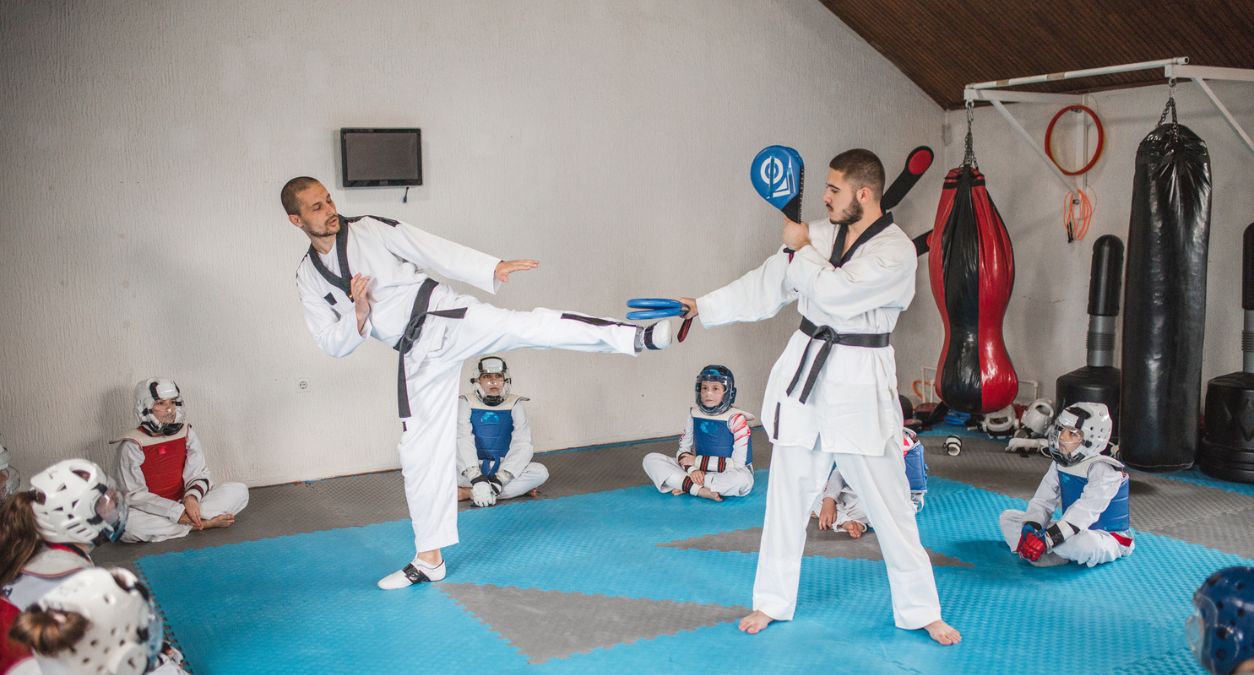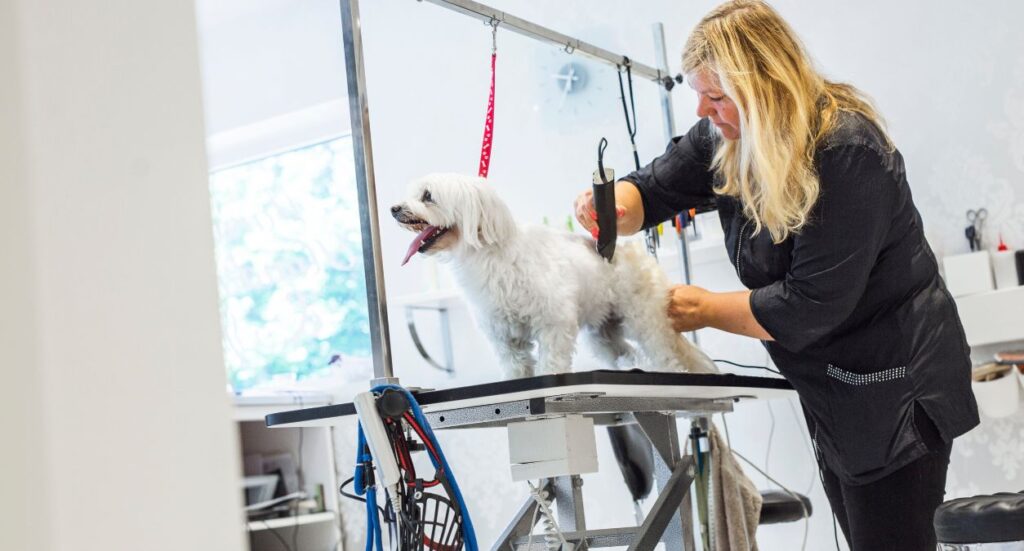Table of contents
Table of contents
Table of contents
Contributors
My main focus is managing the blog and product content for the Protectivity website ensuring everything aligns wi...
Starting and running a successful martial arts business can be an incredibly rewarding, combining your passion for martial arts with the opportunity to make a positive impact on your community. Whether you’re a martial arts instructor, running a club, or part of an organisation looking to branch out, this blog is focused on you.
We’ll guide you through finding your niche and selecting the types of martial arts to offer, the essentials of starting up and marketing your business, and share invaluable tips for long-term success.
Defining your niche
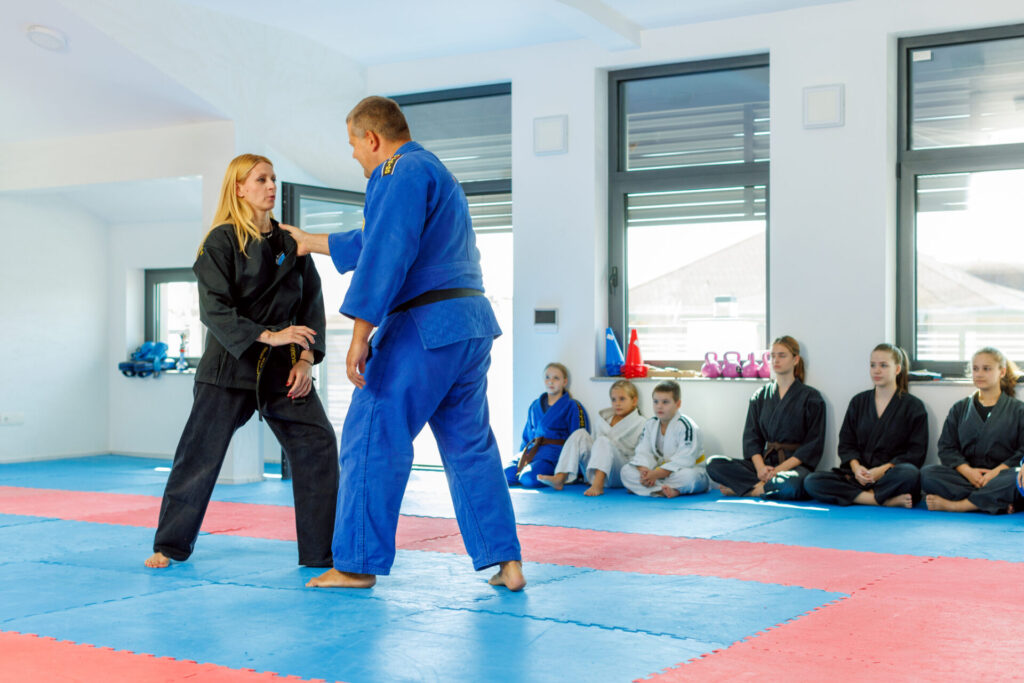
Nailing down your martial arts business niche is essential for building a solid base and setting clear goals. So how do you discover your unique niche and figure out your target audience? Let’s explore the various types of martial arts businesses you can create.
Differentiation
Clearly defining your niche helps you stand out from competitors. Whether you specialise in a specific martial art style (e.g., Brazilian Jiu-Jitsu, Taekwondo, Muay Thai) or cater to a particular demographic (e.g. children, adults, seniors), it allows you to position your business uniquely in the market.
Target Market
Knowing your target market enables you to tailor your marketing efforts effectively. For instance, if your focus is on families with young children, your messaging and promotions can emphasise the benefits of discipline and confidence-building through martial arts.
Different types of martial arts business or club
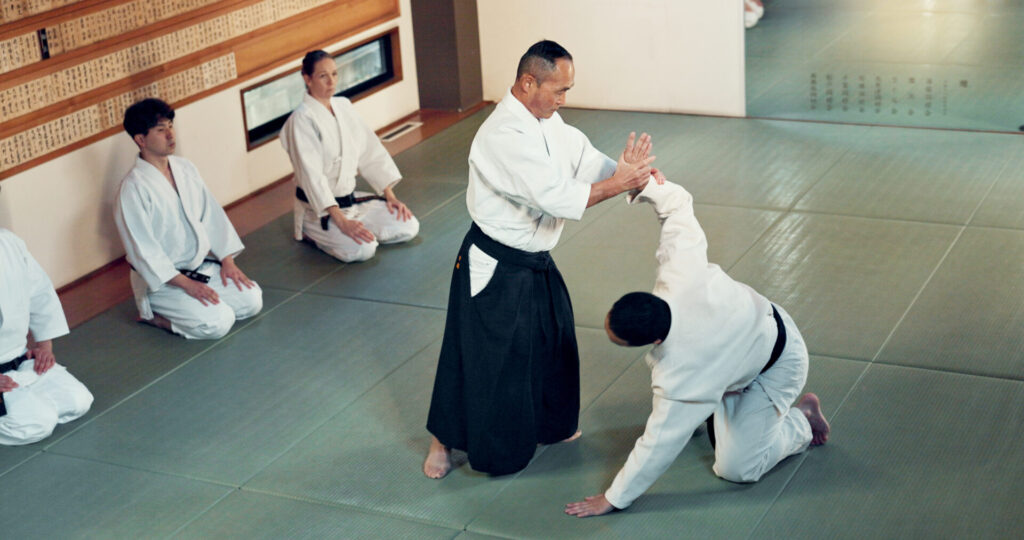
When choosing the type of martial arts business, consider factors such as your expertise, target audience preferences, local market demand, and scalability. Each type has its unique considerations regarding space requirements, equipment needs, and instructor qualifications.
Martial arts studio
A physical location where classes are conducted regularly. Studios can focus on a single martial art style or offer a variety of disciplines.
Martial arts school
Similar to a studio but often implies a more structured curriculum and may cater to students progressing through belts or ranks.
Online courses and training
With the rise of digital platforms, offering online martial arts courses can reach a broader audience beyond your local area. This can include pre-recorded instructional videos, live streaming classes, or a combination of both.
Mixed martial arts (MMA) gym
A training facility where individuals can learn and practice a variety of combat sports disciplines, including striking and grappling techniques, to compete in or simply enjoy the multifaceted sport of MMA.
Self-defence workshops
A self-defence class in terms of martial arts is a focused training session where participants learn martial arts techniques and strategies specifically designed to effectively defend themselves against physical threats, often appealing to specific groups such as women or seniors.
Fitness-based martial arts
These classes emphasise fitness benefits alongside martial arts training, such as cardio kickboxing or martial arts-inspired fitness routines.
Corporate wellness programs
Offering martial arts classes as part of employee wellness initiatives or team-building exercises.
Legal and administrative requirements
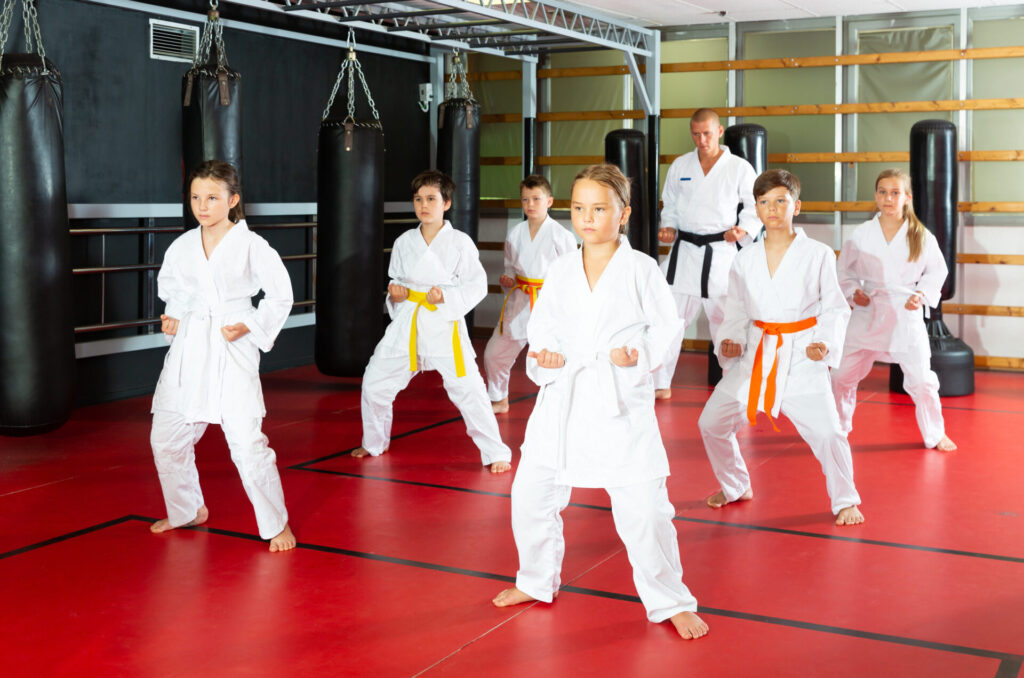
Starting a martial arts business will involve several important considerations to ensure legal compliance, safety, and professionalism.
Business Registration
Before launching your martial arts business, you’ll need to choose a legal structure and register your business with the appropriate authorities.
Permits and Licences
Obtaining the necessary permits and licences is crucial for compliance with local regulations. Requirements may vary depending on your location but commonly include:
- Business and premises licences.
- Health and safety compliance and risk assessment.
Checking with your local government or small business administration can help identify specific permits and licences needed for your martial arts business.
Qualifications
Having qualified instructors is essential for maintaining credibility and ensuring the safety of your students. Consider the following qualifications:
Martial Arts Certification:
Instructors should hold certifications or rank recognition from reputable martial arts organisations.
Teaching Experience
Experience in teaching martial arts, especially to different age groups and skill levels, is beneficial.
First Aid and CPR Certification
Ensures instructors are prepared to handle medical emergencies.
Insurance
Make sure your insurance policy covers you for every eventuality you may have as a Martial Arts Instructor or organisation; without it, you could leave yourself vulnerable to potential risks and financial losses.
Setting up your space for martial arts

Setting up a martial arts business space involves strategic decisions that directly impact both the functionality and appeal of your studio or school. When choosing a location, prioritise accessibility for your target demographic, ensuring it’s easily reachable by your students.
Consider proximity to residential areas or schools to attract families and young adults. Additionally, evaluate the space’s size and layout to accommodate your classes comfortably, with enough room for movement and equipment storage.
Regarding layout and equipment, opt for a spacious training area with appropriate flooring (such as mats or sprung floors) suitable for martial arts practice. Essential equipment includes mirrors for technique feedback, punching bags, mats, and possibly props for specialist training.
Creating a welcoming environment involves factors like ample natural light, ventilation, and cleanliness. Pay attention to décor as a well-designed martial art space not only facilitates effective training but also enhances the overall atmosphere, fostering enthusiasm and dedication among students.
Marketing your martial arts business
When setting up a martial arts business, effective marketing is essential to attract students and build a strong community presence.
- Start by creating a professional website that highlights your classes, instructors’ qualifications, and testimonials from satisfied students.
- Use social media platforms such as Facebook, Instagram, and YouTube to showcase class demonstrations, student achievements, and upcoming events.
- Engage with local communities through partnerships with schools, community centres, and local businesses can help spread word-of-mouth referrals. Offering introductory classes or workshops can entice new students to try your martial arts programs.
- Collect email addresses and maintaining a regular newsletter can keep current and potential students informed about promotions, events, and training tips.
- Lastly, encourage satisfied students to leave reviews to enhance your online reputation and credibility.
Developing your martial arts program
Developing a martial arts program requires thoughtful planning to ensure it meets the needs of your students while aligning with your business goals. Begin by defining clear learning objectives for each level or class, considering the progression of techniques and skills from beginner to advanced levels.
Tailor your program to appeal to your target demographic, whether it’s children, adults, or specific interest groups like self-defence enthusiasts. Incorporate a variety of training methods such as drills, sparring, forms (katas), and self-defence techniques to keep classes engaging and comprehensive. It’s crucial to regularly assess and adjust your program based on student feedback and performance to enhance effectiveness and retention.
Additionally, consider offering workshops or seminars to further develop skills or explore new martial arts disciplines. By prioritising student development, engagement, and diversity in training methods, you can create a dynamic martial arts program that attracts and retains students while fostering their growth and enjoyment in the discipline.
Building a strong student base
Building a strong student base for your martial arts business involves strategic approaches to attract new students and retain them over the long term. Start by creating a positive and welcoming atmosphere in your studio or school, where students feel motivated and supported in their martial arts journey.
Free trials
Offering trial classes or introductory offers allows prospective students to experience your teaching style and the benefits of martial arts training firsthand, potentially converting them into regular attendees. Encourage word-of-mouth referrals by providing exceptional customer service and rewarding current students for bringing in new members.
Loyalty incentives
Implementing loyalty programs or incentives for consistent attendance and achievements can also foster student retention. Regular communication through newsletters or social media updates keeps students informed about upcoming events, promotions, and class schedules, maintaining engagement and interest.
By consistently delivering high-quality instruction and cultivating a sense of community within your martial arts business, you can effectively build and sustain a strong student base eager to learn and grow with your program.
What makes a successful Martial Arts Business

Running a successful martial arts business goes beyond teaching techniques—it requires a combination of strategic planning, effective management, and a deep understanding of your students and community. Here are key factors that contribute to a thriving martial arts business:
Successful martial arts businesses have a clear vision of what they aim to achieve and a mission that resonates with their students. This clarity guides decision-making and creates a cohesive identity that attracts students and instructors alike.
Strong management
Leadership plays a crucial role in setting the tone and culture of your martial arts business. Effective management ensures smooth operations, from scheduling classes to managing finances and handling student inquiries promptly.
Quality instruction
The heart of any martial arts business is the quality of instruction. Successful businesses invest in qualified instructors who not only excel in their martial art but also possess teaching skills that motivate and inspire students.
Continuous improvement
Martial arts evolve, and so should your business. Successful businesses stay updated with industry trends, incorporate feedback from students, and continuously improve their programs and facilities to meet changing demands.
Adapting to challenges and trends
To thrive in the competitive landscape of martial arts, businesses must address common challenges such as fluctuating student retention rates by implementing engaging and dynamic class structures, stay relevant by integrating current trends like virtual training sessions and wellness programs, and emphasise the importance of continuous improvement and adaptation to meet the evolving needs of their students and the industry.
Commitment to student success
Putting students’ progress and well-being first builds trust and loyalty. Successful martial arts businesses focus on nurturing each student’s journey, celebrating achievements, and providing personalised guidance and support.
Financial stability
Sound financial management ensures the long-term sustainability of your martial arts business. This includes managing cash flow, budgeting for expenses, and diversifying revenue streams through memberships, merchandise sales, and special events.
Get martial arts insurance with Protectivity
As mentioned, a key component for success as a martial arts business or club is to make sure you have the best suited insurance cover in place. That’s because you never know what might happen, whether it’s an accident or injury to a client, an injury that prevents you from working, or loss, theft or damage to your equipment. Even the most successful and experienced instructors can find themselves in situations where things have gone wrong, but insurance helps protect you against these scenarios.
Protectivity can offer specialist martial arts insurance for instructors or clubs. Our cover includes personal injury, equipment cover, public liability, and employer’s insurance if you run a business that employs other people. With our affordable, flexible policies, you can take your business to the next level with confidence that you aren’t at risk of long-term financial stress.
Take a moment today to have a closer look at our affordable, specialist policies when you get a quote online.
Get Martial Arts Insurance from Protectivity
*Disclaimer – This blog has been created as general information and should not be taken as advice. Make sure you have the correct level of insurance for your requirements and always review policy documentation. Information is factually accurate at the time of publishing but may have become out of date.
Last updated by




